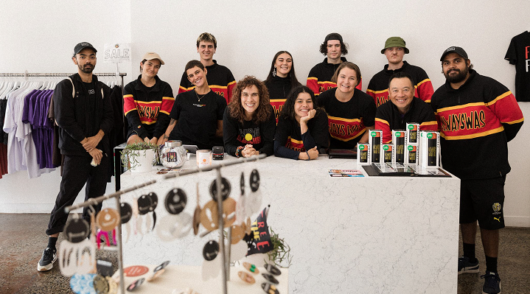Remember the good old days when customers were prepared to pay full price?
New research confirms that those times are but a distant memory. And the biggest culprits are the grey-haired brigade. Yes folks, that sweet little old lady in your store takes no prisoners when it comes to price.
The findings come from the Brand Asset Valuator*, the world’s largest database of brands. In Australia, over 5000 people were interviewed late last year as part of the global study. Respondents were asked for their views on 1357 brands, including a broad selection of retailers.
With retail in a parlous state, the Brand Asset Valuator’s Australian chief, Keith Newton, made sure that the study paid particular attention to customer attitudes to brands on the basis of price and value.
“In 2003, the average score per brand for ‘would only buy on sale’ was 23 per cent,” Newton told me. “In 2006, we got precisely the same number – very stable. But in the latest study, the figure has gone through the roof”.
In fact, when you ask customers in 2011 whether they would only buy a particular brand on sale, the average is 49 per cent – more than double the statistic just five years before.
It gets even more interesting when you dive into the demographics. In 2006, those aged 50+ were the least likely to buy on sale – people 34 to 50 were most watchful with their pennies. In 2011, older customers are the most likely of all age groups to keep their hands in their pockets.
In assessing a basket of brands, 51 per cent of all people 50+ say they “would only buy on sale”.
It makes sense when you think about it. Older Australians are closer to retirement, and they have been most badly burned by the Global Financial Crisis – in terms of super, stocks and real estate. Every buck counts.
The US experience supports the findings, but with one critical difference. John Gerzema, executive chairman of Brand Asset Valuator Consulting worldwide, and author of the Wall Street Journal best seller “Spend Shift”, told me that both older and younger demographics have changed the way they consume.
“The highest percentage of ‘Spend Shifters’ – those practicing mindful (versus mindless consumption) were seniors as well as Millennials, who carry many of the similar values… (due to) the combination of depleted savings, impending retirement and the prospects of unemployment/under-employment.”
Getting back to the Australian study and the statement “would only buy on sale”: retailers must accept some of the blame for the change in customer attitudes. As I’ve noted before, our high streets and malls have been a sea of red sale signs in recent years, and 70 per cent off is the new 50 per cent off.
We can’t go back to “the good old days”. But we can work to build some integrity back into pricing, so that customers aren’t trained to wait till an item goes on sale before they buy.
It takes some nerve, but retailers such as Apple and, more recently, US department store JC Penney, have shown that it is possible to avoid “mark up to mark down”.
Until we follow their lead, we have to expect that customers will play the waiting game… and that little old lady in particular will stare you down until you go on sale.
Jon Bird is CEO of specialist retail marketing agency IdeaWorks, and Chairman of Octomedia, publisher of Inside Retail. Brand Asset Valuator is a research tool of Y&R Group, of which IdeaWorks is a member agency. Email Jon. Read his blog. Twitter: @thetweetailer






